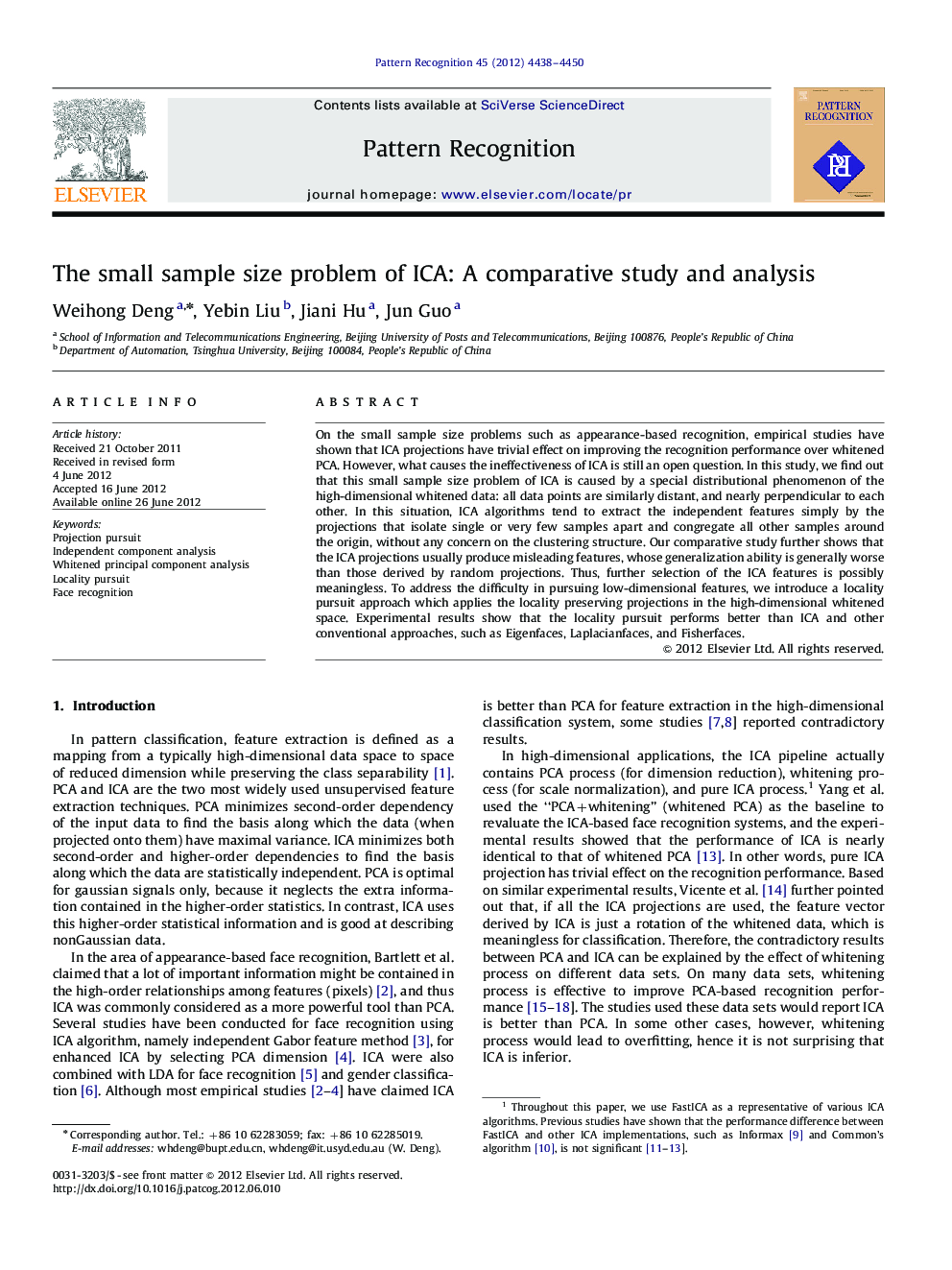| Article ID | Journal | Published Year | Pages | File Type |
|---|---|---|---|---|
| 530149 | Pattern Recognition | 2012 | 13 Pages |
On the small sample size problems such as appearance-based recognition, empirical studies have shown that ICA projections have trivial effect on improving the recognition performance over whitened PCA. However, what causes the ineffectiveness of ICA is still an open question. In this study, we find out that this small sample size problem of ICA is caused by a special distributional phenomenon of the high-dimensional whitened data: all data points are similarly distant, and nearly perpendicular to each other. In this situation, ICA algorithms tend to extract the independent features simply by the projections that isolate single or very few samples apart and congregate all other samples around the origin, without any concern on the clustering structure. Our comparative study further shows that the ICA projections usually produce misleading features, whose generalization ability is generally worse than those derived by random projections. Thus, further selection of the ICA features is possibly meaningless. To address the difficulty in pursuing low-dimensional features, we introduce a locality pursuit approach which applies the locality preserving projections in the high-dimensional whitened space. Experimental results show that the locality pursuit performs better than ICA and other conventional approaches, such as Eigenfaces, Laplacianfaces, and Fisherfaces.
► Justify the identical pairwise distances between the whitened sample vectors. ► Explore the intrinsic cause of the small sample size problem of ICA. ► Apply random projections as baseline to validate the ineffectiveness of ICA. ► Apply LPP to seek low-dimensional features in the high-dimensional whitened space. ► A comparative study of 10 methods on appearance-based recognition.
